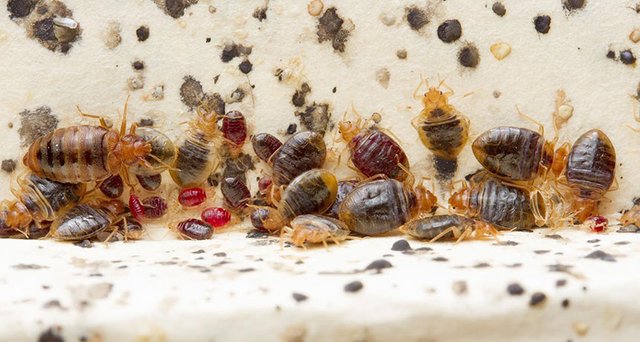Bedbugs release histamine into the house!!
Hi steemians....
If they do not seem to transmit disease, bed bugs leave histamine in the homes they infest. The molecule involved in allergic reactions remains even months after the disappearance of bedbugs ...
Bedbugs Cimex lectularius cause a great deal of concern to the inhabitants who make it an unfortunate experience, because it is not so simple to get rid of: professional treatments are expensive, the use of insecticides in housing, and in beds is a problem and, in addition, bed bugs have developed resistance to insecticides.
From a health point of view, the sting of bed bugs does not seem to convey disease. In the laboratory, it can spread the Chagas disease agent (Trypanosoma cruzi) but there is no evidence that such transmission exists in real life. And if the health risk was anything else, and related to a molecule left by bedbugs in your home?
Bed bugs naturally release histamine into their excrement. They even use it to mark a good location to join it. When bedbugs arrive in housing, they tend to focus in rooms where humans sleep, their source of food. In humans, histamine is naturally released during an immune response. It promotes inflammation and the fight against pathogens. But it can also have a harmful effect, causing redness through contact with the skin and breathing problems by inhalation.
Histamine is a molecule released by mast cells. It plays a role in the symptoms of allergy. This is why antihistamines are prescribed in case of hay fever or against the itching of urticaria.
Researchers at the State University of North Carolina (USA) studied a complex of apartments in the city of Raleigh where some homes had been infested with bed bugs and others had not. The researchers recovered dust.
More histamine in flats infested by bed bugs
Infested apartments had much more histamine in their dust than uninfested dwellings in the same complex or other apartments located more than 8 km away. Histamine levels in infested dwellings were at least 20-fold higher: 54.6 μg per 100 mg of dust, compared to less than 2.5 μg per 100 mg of dust in uninfested dwellings.
The researchers also measured histamine after housing was heat-treated against bed bugs. During the three months following treatment, histamine levels did not decrease much: despite the heat, the molecule persisted in the housing. For efficiency, it may be necessary to combine the heat treatment with a thorough cleaning of the apartment.
Because humans sleep near bed bugs, high levels of histamine may pose a health risk. Further work is needed to understand the effects of chronic exposure to low levels of histamine in the home. This study appears in the journal Plos One.
WHAT YOU MUST REMEMBER
Bed bugs release histamine with their excrement.
Histamine promotes allergic reactions in the human body.
The dust of infested houses contains twenty times more histamine than the others.
Source: http://journals.plos.org/plosone/article?id=10.1371/journal.pone.0192462
Follow me @sparganose


Thanks for the helpful info. I read about bed bugs found in motels, hotels rooms. We do travel a fair bit and we must be on the lookout for them. You just don't know where they would show up. Allergy is not easy to treat if one does not know what causes that. A lot of people are totally unaware of this fact.
I have been suffering from allergies for years and I am trying to find out why I treat them effectively. Thank you for passing